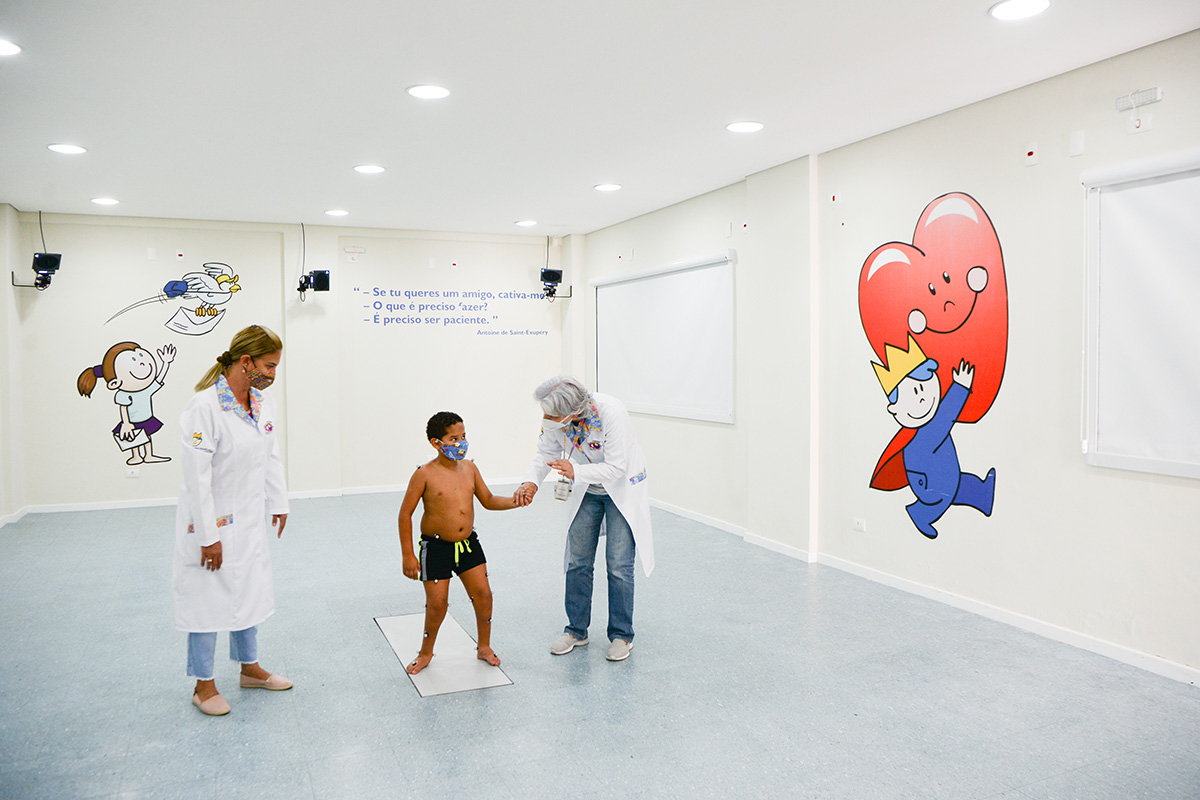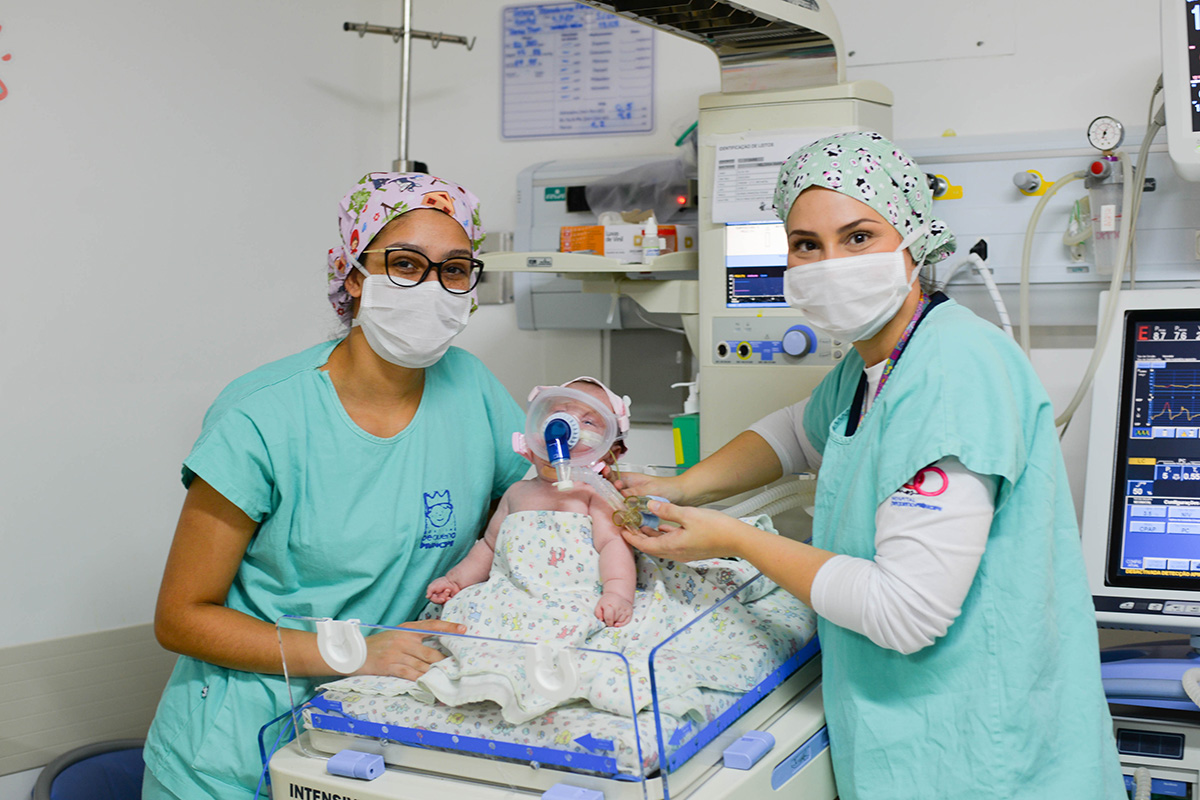Equipment enabled by the funds raised at the Pequeno Príncipe Gala supports research and healthcare activities
Liquid chromatography allows researchers to monitor the level of drugs in patient’s blood, thus helping to choose more accurate treatment
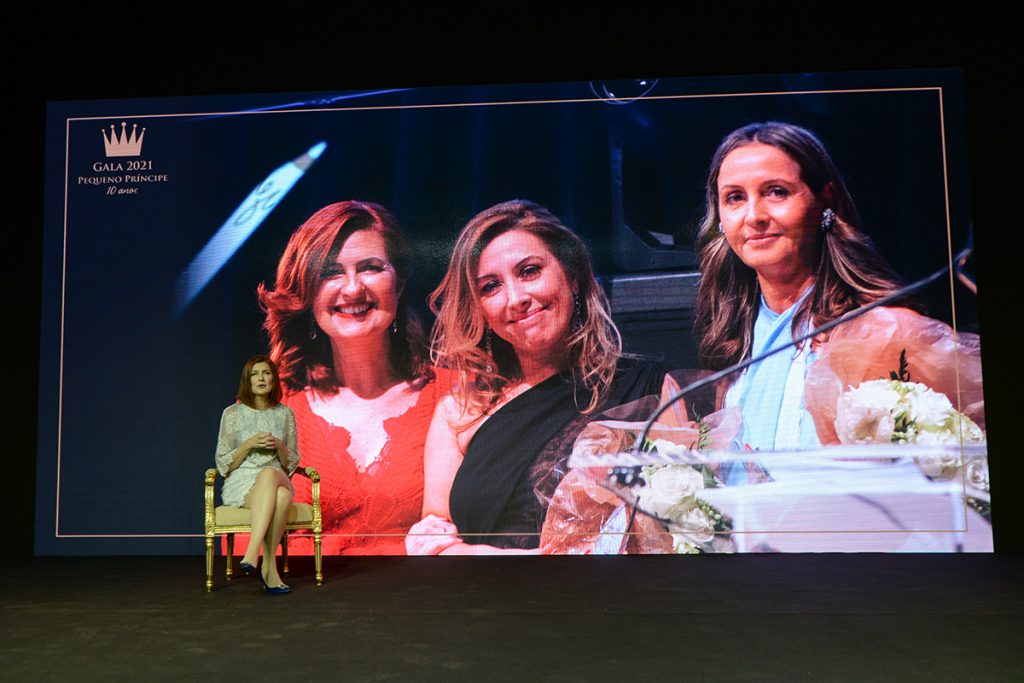
The Pequeno Príncipe Gala project reached 10 years counting on the great commitment of the community. The funds raised were key to supporting the improvements in the Pelé Pequeno Príncipe Research Institute facilities, as well as the treatment of complex diseases afflicting children and adolescents. “The sophistication of our Gala lies in its deep and attentive look to the community as a whole. We’ve been to many places around the world, taking with us the excellence of the work accomplished along our centennial journey. It is a joy to share with you that this amazing project has already raised more than US$ 4.5 million addressed to research and healthcare activities of Pequeno Príncipe,” highlights Ety Cristina Forte Carneiro, executive director of Pequeno Príncipe Hospital and general director of the Research Institute.
One equipment enabled by the initiative was the high-performance liquid chromatography (HPLC), a key tool for many of the ongoing studies at the Institute and that also brings many benefits to the patients under treatment at the Pequeno Príncipe Hospital, since it helps the team to monitor important drugs used in the treatments.
Chromatography is the technology used to analyze components from complex mixtures. It allows qualitative analysis, such as the ones conducted to assess the chemical composition of plants in order to identify new compounds with pharmacological potential – which is one of the ongoing research lines in the Chromatography Laboratory of the Institute led by researcher Lauro M. de Souza, PhD. Moreover, the HPLC is also designed to make quantitative analysis, allowing the researcher to identify the quantity of any important individual compound present in complex mixtures, such as in blood samples, helping the researchers to make use of the cutting-edge techniques employed to the precision medicine, the “Therapeutic Drug Monitoring”.
Currently, in the Chromatography Laboratory of the Institute, studies are being conducted over two important drugs: the mitotane, used in patients under treatment for adrenal carcinoma, and the voriconazole, a medicine used to treat many fungal infections, with special significance for patients submitted to bone marrow transplantation (BMT). Other medicines will be included soon.
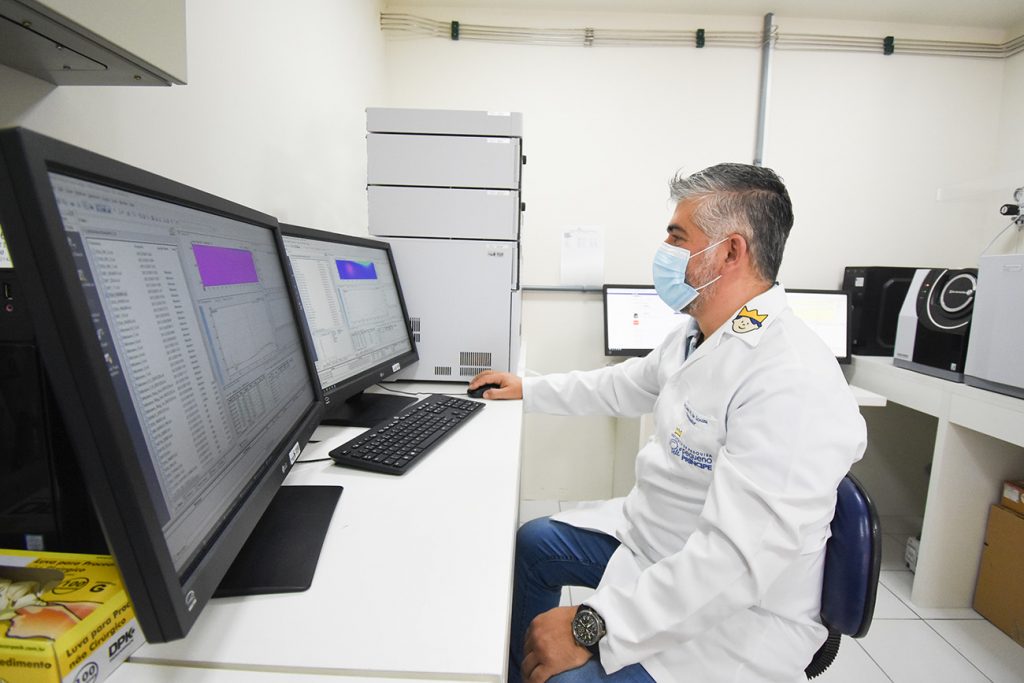
The researcher, Souza, who conducts the works, explains that although there is a recommended dose of these drugs for pediatric patients, studies showed that some patients may reach toxic concentrations of the drugs, or, they do not respond satisfactorily to the therapies due to subtherapeutic condition. Each patient is unique, having unique demands, that is why a tailor-made treatment is of most importance. This is exactly what chromatography enables. Since the measure the levels of drugs, along with an assessment of the clinic condition, allowing the best therapeutic regime for each case, finding the right dosage, exchanging the administrating way, or even replacing the drug. This way, the Pequeno Príncipe Complex can offer a more accurate and safe treatment for its patients.
“We perform weekly analysis of the blood samples from patients using voriconazole and monthly analysis of the ones using mitotane. During the year 2021 we accomplished about a hundred analysis which benefited 43 patients,” says the scientist.
High-cost drugs
The funds raised at the Pequeno Príncipe Gala also supported the acquisition of high-cost drugs, used in the treatment of cancer and other complex and rare diseases, that are not offered by the Public Health System (SUS). Guilherme Vinícius dos Santos Ribeiro was one of the patients benefited. By the age of 5, he was diagnosed with a rare disease called Wiskott-Aldrich syndrome, which features the presence of low blood platelets, recurring infections, development of many types of cancer and autoimmune diseases. The only treatment that could bring good chances of cure was the bone marrow transplantation.
Living in the city of Recife, Northeast of Brazil, the family traveled to Curitiba, looking for treatment at Pequeno Príncipe, that holds the greatest expertise in this type of procedure.
Guilherme was submitted to the transplantation in January 2021 and in the post-transplant he presented a series of complications caused by viruses and bacteria. “It was a period of great tension and suffering. He was in pain and no drugs could beat the infections”. The Head of the BMT Service, Carmem Bonfim, explains that the boy had a complication known as hemorrhagic cystitis, of which, the primary symptom is blood in the urine and causes severe pain.
The drug that could help Guilherme is the cidofovir. It is an imported high-cost medicine, that costs up to US$ 1,400 each ampoule. The whole treatment demands the use of five ampoules, coming to a total of US$ 7,000. This is a cost that is not covered by the Public Health System. It was thanks to the continuous support of our donors, especially the ones involved in the Gala, that the Hospital could offer Guilherme the treatment. “My son used to cry in pain the whole day, but after taking the treatment, his life changed. The infection ceased and the bone marrow transplantation was a success,” celebrates the mother.
Use of the funds
The Pequeno Príncipe Gala 2021 was held in a virtual edition because of the COVID-19 pandemic. Still, our continuous supporters were, once more, committed to make of the initiative a great success and helped to achieve its fundraising goal, even surpassing the mark of US$ 300,000.
Follow the use of the funds in the table below:
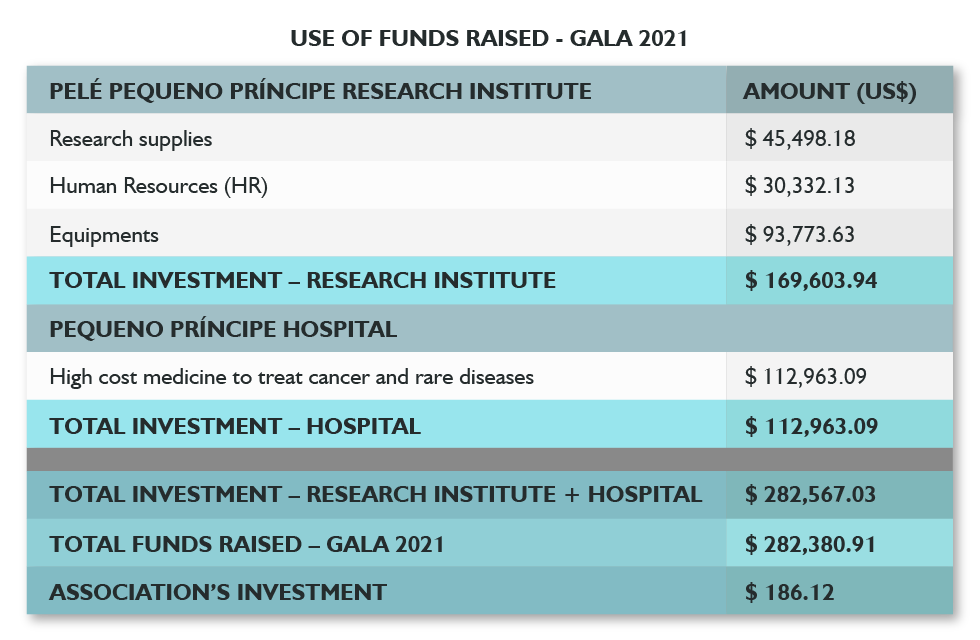
More
Pequeno Príncipe launches a high technology service to identify mobility problems
Exams conducted at the Computerized Gait Laboratory enables accurate diagnosis and treatment; the service is the only one in Paraná State to perform clinical assessment
Learnings brought by the COVID-19 pandemic help to reduce mortality rate
Mortality rate dropped from 1.6%, in the first year of the pandemic, to 0.1% in the beginning of the third year. New drugs and equipment are also among the great learnings


